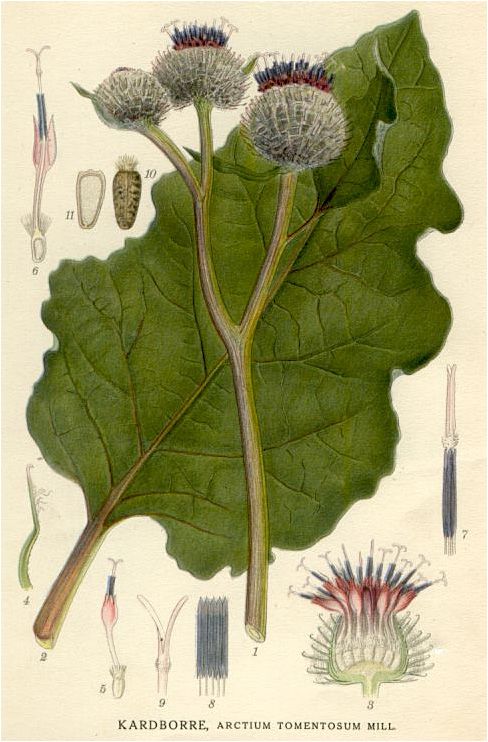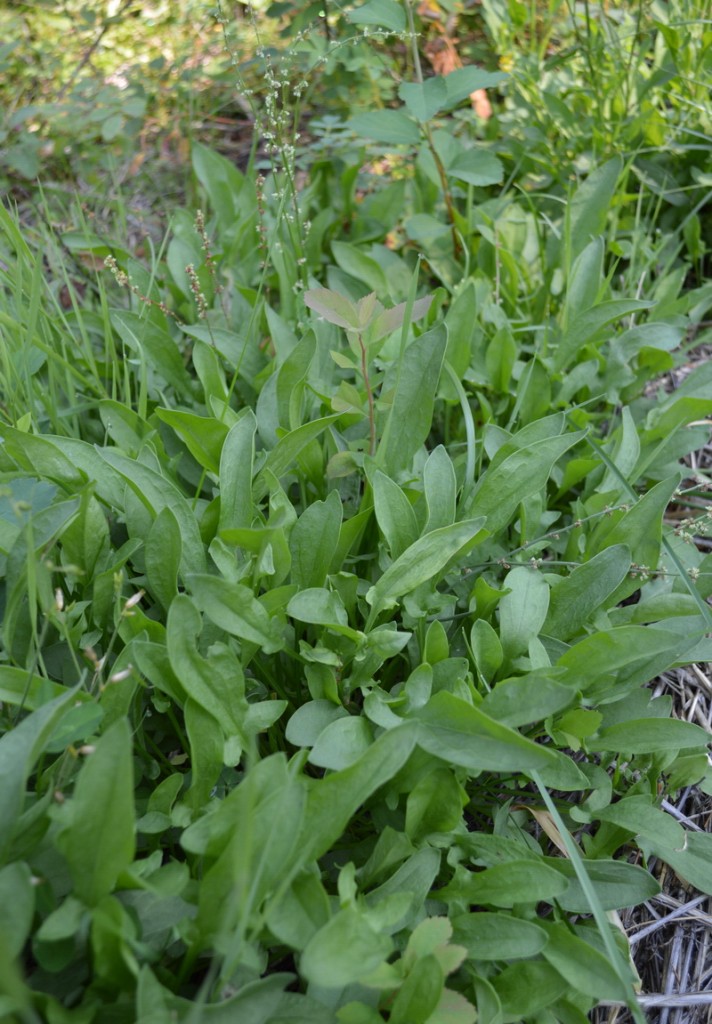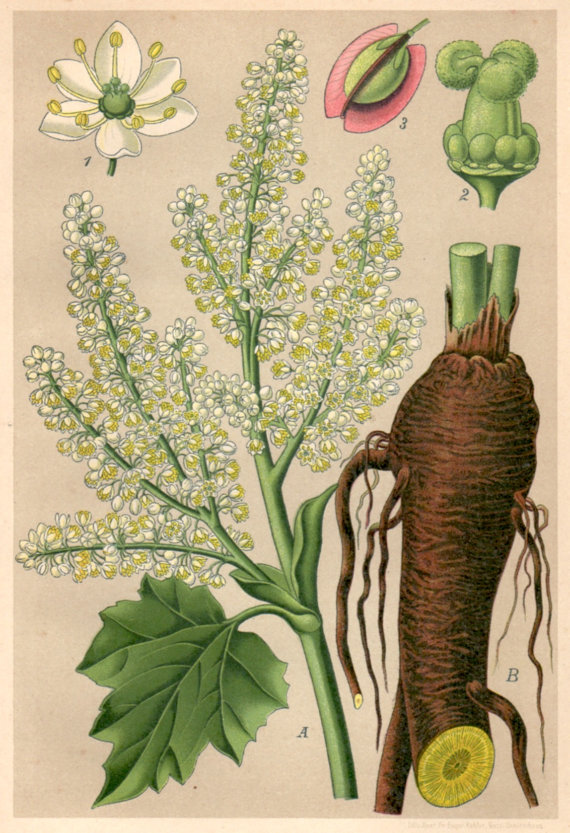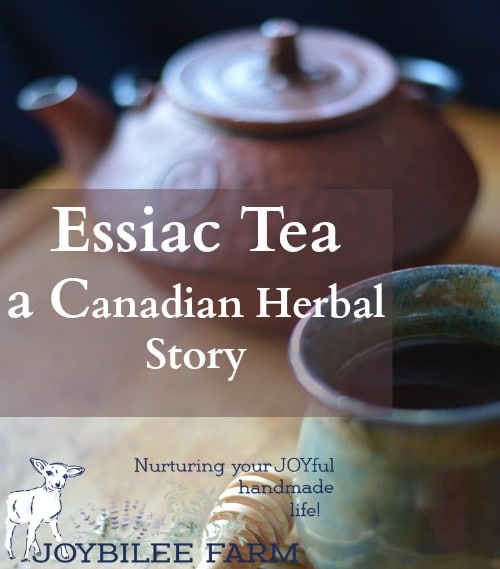Making Essiac Tea
Essiac Tea is probably the most famous herbal remedy in Canada. The tragic story behind it is the story of this modern age. It’s a story of corporate monopoly. It’s a story of herbal efficacy hidden from the people who could most benefit from it. It is a story of courage, if not a story of triumph.
The Essiac Tea formula was given to Canadian nurse, Rene Caisse by a patient who received the recipe from a First Nations Herbalist for treating her breast cancer. When Rene met the patient she had already been healed of breast cancer for several years and all that remained was a scar on the breast.
Rene Caisse successfully used the herbal decoction to treat her Aunt, for stomach cancer. Then she went on to use it on patients that had been labelled hopeless by medical doctors. Doctors actually sent their difficult cases to her. In the 1920s there wasn’t much hope for cancer patients and a diagnosis of cancer was a death sentence, much like it is today.
Ms. Caisse honed the formula specifically for individual patients, finally settling on a 4 herb formula, later in life.
Ms. Caisse was so successfully at helping hopeless cancer patients that eight respected doctors in 1926 presented a petition that stated, “…the treatment for cancer given by Nurse R.M. Caisse can do no harm and that it relieves pain, will reduce the enlargement and will prolong life in hopeless cases.”
Twice in 1939 Nurse Caisse spoke before a hearing to defend her herbal treatment. Once in February 3 and 4 at a Subcommittee Meeting in Bracebridge, Ontario and once July 4th 1939 at a Cancer Commission Hearing in Toronto, Ontario.
During these hearings 17 patients testified of the good that Essiac, Caisse spelled backwards, did for them, including many seemingly miraculous cures.
But the story in Canada was similar in the 1940s as it was in the USA. The chemical companies had a monopoly on patented medicine, and Nurse Caisse was threatened with jail if she continued to give patients Essiac Tea for their cancer.
The crazy thing is Nurse Caisse actually never received any money for the treatment. She gave it free of charge to her patients. And she always did it only after they had been diagnosed with cancer by their own doctor. She only saw patients that had a doctor’s referral.
After she was prevented from treating patients with Essiac in her Ontario clinic, she continued to help neighbors from her home, until her death, with assistance in preparing the medicine and collecting or sourcing the herbs from friends and neighbors.
After her death, at 90, her assistant, Mary McPherson, swore an affidavit with the complete formula, as she had prepared it for the cancer patients that were treated by Ms. Caisse. And that is what we have today. The source for the recipe for Essiac Tea comes from a copy of the handwritten formula and the directions for preparation, as written by Nurse Caisse’s assistant. My source for the recipe is The Complete Essiac Essentials (Sheila Snow and Mali Klein). Sheila Snow was a friend of Rene Caisse and documented much of her work through interviews, and conversations over several decades.
A word about Essiac ingredients
Burdock Root (Arctium lappa) is nutritive, astringent, detoxifying, cooling, soothing. It breaks down the mucous membrane on cancer cells to allow the body’s own defences to penetrate the cells. Rich in antioxidants, it is supportive of the liver and aids in the removal of cellular garbage from the body. Burdock root is 53% of the Essiac formula.
Sheep Sorrel (Rumex acetosella) is astringent, antioxidant, bitter, cooling, diaphoretic, diuretic, anti-tumour, and nutritive. It is the sheep sorrel and sheep sorrel roots that breaks apart turmors and prevents metastasis. Sheep sorrel is the most important herb in the Essiac formula and the herb that has the strongest anti-tumour action.
It’s important that the herb be harvested with the roots, as they have the highest antioxidant ratio. For this reason if you can harvest your own Sheep Sorrel, you’ll have a better quality herb. Most commercially available sheep sorrel is harvested with only the tops of the plants. For best results the sheep sorrel should include at least 10% roots, by weight. Sheep Sorrel is 35% of the Essiac formula.
Slippery Elm bark (Ulmus rubra) is from the inner bark of the Red Elm tree. It is antioxidant, demulcent, emollient, soothing, and nutritive. It soothes the stomach and adds minerals. It is 9% of the Essiac formula.
Turkey Rhubarb (Rheum palmatum) is antimicrobial, anti-inflammatory, anti-bacterial, astringent, diuretic, anti-oxidant, cooling, laxative, and nutritive. Turkey Rhubarb is 2% of the Essiac Formula. Garden Rhubarb should not be substituted for Turkey Rhubarb. Indian Rhubarb is not as medicinally potent as Turkey Rhubarb.
Essiac Tea
Yield ½ lb. enough for 20 litres of Essiac Tea (30 doses per litre)
This formula is enough for one person for 5 months. It’s best to make the Essiac formula in small batches that can be used up in a few months. The herb, once powdered, will lose its effectiveness if stored for long periods. This herb is not as effective if tinctured.
Ingredients:
120 g cut, dried Burdock Root
80 g dried, powdered sheep sorrel, harvested with the roots (IMPORTANT!)
20g dried, powdered slippery elm bark
5 g dried, powdered Turkish Rhubarb Root
Directions:
Essiac is made in two parts. First the dried herbs are mixed. Then a small portion of the dried herbs are made into a decoction which becomes the Master Essiac Tonic. The actual Essiac Tea is made from a small portion of the Master Essiac Tonic.
To make the Essiac Tea Blend: Mix herbs thoroughly together. Store in glass jar with tight fitting lid, away from heat and light. Do not freeze the herbs. They may however, be kept refrigerated.
To make Master Essiac Tonic:
2 tbsp. or 10 grams herb
4 1/4 cups or 1 litre of boiling water
Simmer in a stainless steel pot with a lid, for 10 min. Turn off heat but keep covered. Allow the pot to steep for 8 hours or overnight.
Reheat the pot just to steaming hot. Do not boil. Turn off the heat. Allow the herbs to settle. Strain the decoction through a fine sieve. Do not filter the decoction before bottling. There will be some thick slippery elm sediment in the mixture. The spent herbs can be used as a poultice. Store the decoction in a sterilized glass jar in the refrigerator.
To Make the Essiac Tea:
Use 2 tbsp. of the Master Essiac Tonic in 1/4 cup of hot water daily for wellness support. Sip it slowly.
While cancer patients have gotten good results with Essiac Tea, Essiac Tea is not a cure-all for cancer. Essiac Tea is a nutritive, tonic tea, which supports your immune system, helps with detoxification, relieves pain, increases anti-oxidants in the diet and supports the body’s own life force. The four herbs together in the Essiac formula have a synergistic effect.
The story of Essiac Tea is an interesting story of successful herbal treatments where conventional medicine had failed. Had Nurse Caisse been treating any other disease except cancer, it’s very likely that she would have been unchallenged in her work, considering she had the support of respected doctors.
If you want to try using Essiac Tea for your own wellness, I strongly recommend reading the book, The Complete Essiac Essentials to understand the nuances of growing and harvesting the herbs for the best quality Essiac Tea.
References:
The Complete Essiac Essentials
The Essiac Report
Clinic of Hope: The Story of Rene Caisse and Essiac









I was wondering if this works for liver cyst.
thank you.